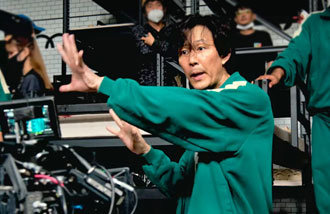‘Makeshift’ reforms to public health pass on the burden to next generation
‘Makeshift’ reforms to public health pass on the burden to next generation
Posted September. 27, 2024 07:54,
Updated September. 27, 2024 07:54
Right before the Chuseok holidays, representatives of resident doctors at the country’s so-called “top five” medical centers were investigated one after another by the prosecution as reference witnesses on charges of abetting the resignation of around 10,000 residents. Whether it is a collective action, as the police argue, or they made their own decisions, as the doctors say, does not make them less unethical given that they left their patients at all once. Nevertheless, the way they protested in front of reporters left the public so angry and frustrated that it would never be seen as a mere result of the Millennials & Gen Z’s laidback individualism, which can be part of the new trend “tang ping (lying down and doing nothing).”
Kim Yoo-young, head of the trainee doctors’ association at Samsung Medical Center, said on Sep. 11, “It is upsetting that those in power who get the VIP treatment at any tertiary hospital wherever it hurts anytime are the decision makers in focal medical issues and public health schemes.” Her voice was shaky with a deep sigh. This young anesthesiology resident said that she gave up on her dream of becoming a pediatric anesthesiologist, which does not pay well. Han Seong-john, head of the trainee doctors’ association at Asan Medical Center, argued that a failure automatically follows unilateral reforms that destroy future generations’ dreams. Likewise, Kim Tae-geun, head of the trainee doctors’ association at Catholic Medical Center, lamented that the incumbent administration passes the buck to the younger generations. They criticize the establishment for cementing their vested interests and exploiting young people by adding two thousand medical school quotas, describing it as a “faux reform.”
The national health insurance system was designed in 1977 to ensure low burden, low medical fees, and low insurance benefits. After all, the state and citizens alike were poor back then. As the distorted medical fee scheme has caused side effects over time, essential healthcare fields have suffered a worsening labor shortage. The previous administrations pledged more comprehensive insurance coverage, only making things go wrong slowly. Resident doctors resist the way the administration does not mend the outdated framework but merely increases the number of doctors as a quick fix.
The ongoing conflict between the government and doctors has resulted in resident doctors putting up with too low pay in exchange for training at a hospital in such an unsustainable medical system. Young residents do not trust the government or their seniors, who have already taken advantage of how things go. They do not think the former will bear the burden of increasing insurance premiums while portraying med school professors as mid-level managers within an innately exploitative framework. Simply put, they have figured that the gist of the current medical reform is to anesthetize the ailing system by increasing med school quotas to get through a brief time period.
Having said that, all thanks to their medical license, resident doctors have been able to be part of "tang ping" for more than seven months and coast to land another job. The right to resistance may be seen as a privilege from the perspective of ordinary people who fight an everyday battle for survival. A larger number of young people are not even allowed to say a word about their choking life, which is tied to the framework designed and built by the established.
Young job seekers are left deeply frustrated with the dual labor market where full-time workers, who only account for 10 percent, preferentially enjoy better pay and greater perks. The way the administration reforms the labor market is not only reluctant to get to the bottom of the issue but also avoids a change to the 52-hour workweek and other peripheral issues. Likewise, the national pension system is likely to make the next generation responsible for a pile of debt. In April, the government said no to the National Assembly’s “parametric reform” bill to increase premium and gross pension replacement rates. Afterward, it set forth its own plan to increase the basic pension, which will inevitably chip away at taxpayers’ money.
Even with the country having below 300,000 newborns a year, the education system is also at the core of the issue in that it is still focused on mass-producing “industrial warriors,” the generation of post-developmental Korea. Rather than implementing a structural reform that will face a backlash from professors and teachers, the government chooses to deceive students with some tweaks made to the way they are evaluated, such as college admissions. What’s more, it even pretends to be working on reforms by designating special education zones.
Park Jae-il, head of the trainee doctors’ association at Seoul National University Hospital, described the current medical reform as a “big mistake in the history of South Korea.” Similarly, the four major reform plans under the incumbent administration tactfully keep the vested interests of the establishment intact by coming up with a “symptomatic therapy” that only handles superficial symptoms without the next generation truly in mind – although there even seems to be little progress made in its efforts as of now.
Headline News
- Conflict mounts over removing rebellion crime from impeachment bill
- 55 percent of Seocho apartment transactions in October involved property gifting
- Richer people live up to nine more healthy lives
- Zelenskyy claims N. Korean troops lost heavy casualties in Kursk
- Man City secures 2 consecutive wins with Haaland leading the charge







